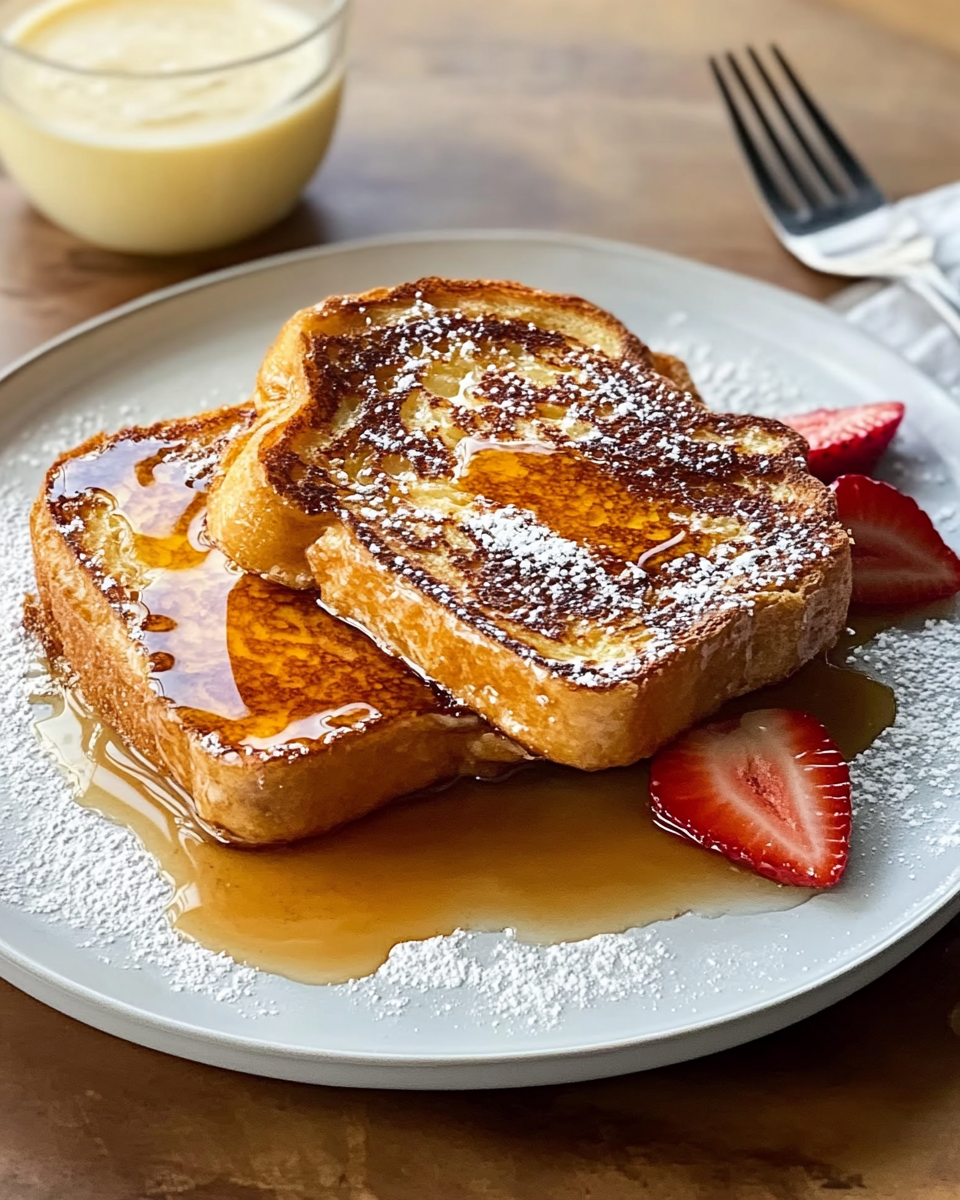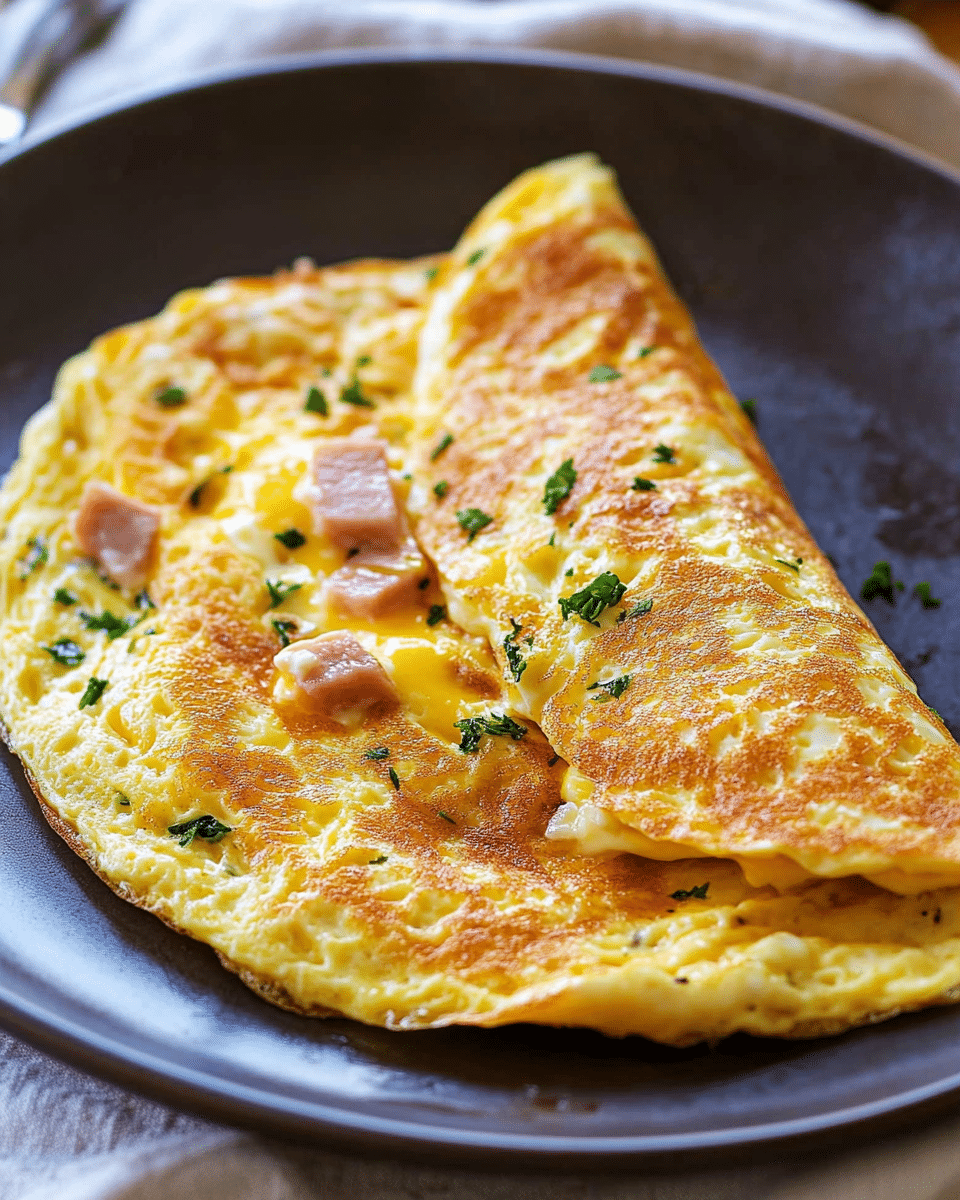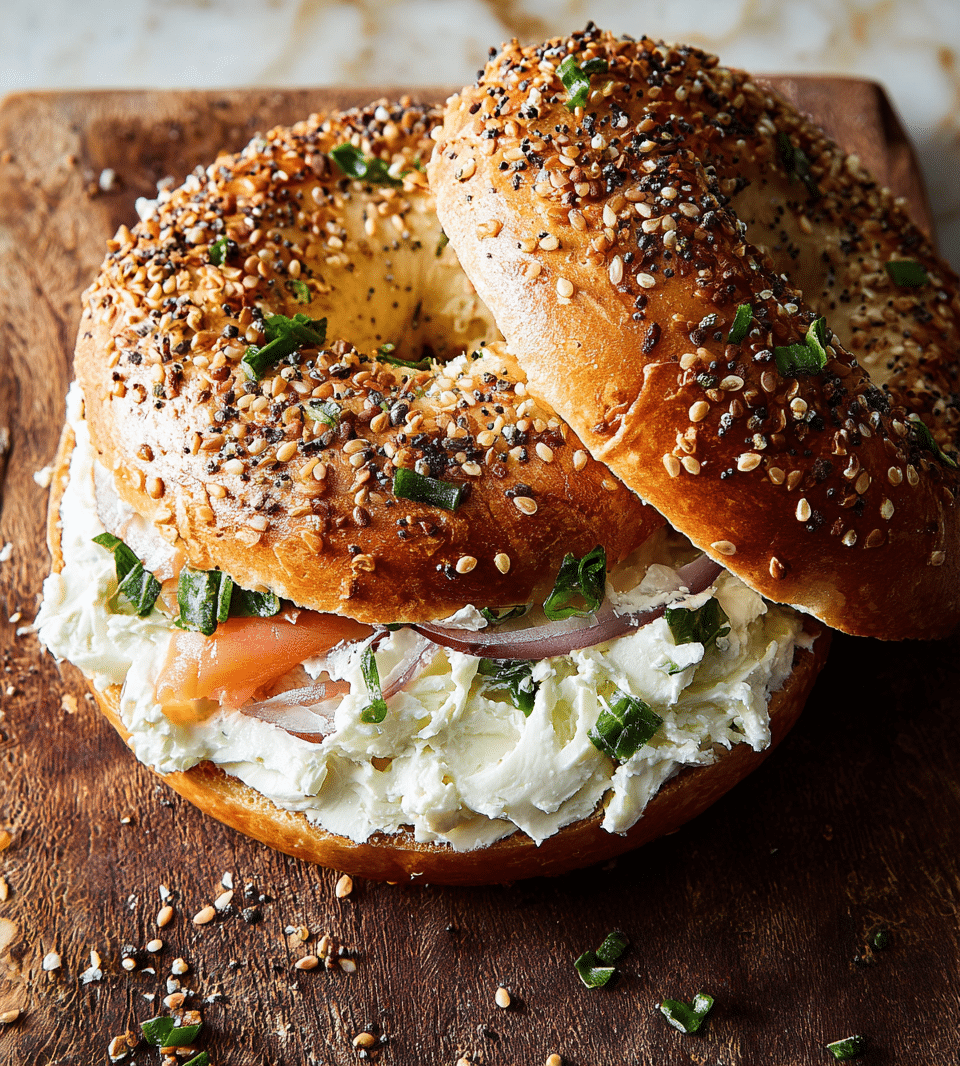This Classic French Toast is a quick, delicious, and satisfying breakfast option perfect for busy college mornings. With simple ingredients and fast prep, it delivers warm, golden slices with a soft, custardy center, ideal for fueling your day.
FULL RECIPE
Ingredients
- 2 large eggs
- 1/2 cup milk (whole or any preferred type)
- 1/2 tsp vanilla extract
- 1/2 tsp ground cinnamon
- 4 slices of bread (day-old bread works best)
- 1 tbsp butter (for frying)
- Maple syrup, powdered sugar, or fresh fruit (optional toppings)
Directions
- In a shallow bowl, whisk together the eggs, milk, vanilla extract, and cinnamon.
- Preheat a non-stick skillet or griddle over medium heat and melt the butter.
- Dip each slice of bread into the egg mixture, coating both sides well.
- Place the soaked bread on the skillet and cook for 2–3 minutes on each side, or until golden brown and cooked through.
- Serve warm with your choice of toppings.
Nutritional Information
- Calories: 290 per serving
- Protein: 10g
- Carbohydrates: 28g
- Sugars: 6g
- Fat: 15g
- Saturated Fat: 6g
- Cholesterol: 180mg
- Sodium: 320mg
- Fiber: 1g
- Calcium: 110mg
- Iron: 2mg
- Potassium: 180mg
History of French Toast
French toast is a timeless dish that dates back to ancient times, with variations found in many cultures around the world. Known as “pain perdu” in France, which means “lost bread,” it was originally a way to use stale or leftover bread by soaking it in a mixture of eggs and milk before frying. This economical and resourceful dish has evolved through centuries, becoming a beloved breakfast staple globally.
Why French Toast is Perfect for College Students
French toast is ideal for college students because it’s fast, affordable, and requires minimal cooking skills. It uses basic pantry ingredients that are easy to store and have a long shelf life. Plus, it provides a good balance of carbs, protein, and fats, giving sustained energy to tackle a busy day of classes or study sessions.
Choosing the Best Bread for French Toast
The type of bread used makes a big difference in texture and taste. Thick slices of day-old bread like brioche, challah, or Texas toast are best because they soak up the custard mixture without falling apart. Using fresh bread can result in soggy toast, so slightly stale bread helps achieve that perfect crispy outside and soft inside.
The Role of Eggs and Milk in French Toast
Eggs and milk form the custard base that gives French toast its creamy texture. Eggs provide protein and help bind the bread, while milk adds moisture and richness. Using whole milk or even cream can make the French toast more indulgent, while skim milk or plant-based alternatives can reduce calories for a lighter version.
Flavor Variations to Try
Though classic French toast is flavored with vanilla and cinnamon, there are endless possibilities for customization. You can add nutmeg, cardamom, or citrus zest to the batter for a twist. Savory versions with herbs, cheese, or even bacon bits can also be made, turning this breakfast into a versatile meal option.
Health Benefits and Nutritional Considerations
French toast provides a balanced mix of macronutrients: carbohydrates from bread, protein from eggs, and fat from butter or milk. It also contains vitamins like B12 and minerals such as calcium. However, portion control and mindful toppings are important since syrup and powdered sugar add extra sugars and calories.
Topping Ideas for Classic French Toast
Toppings can elevate French toast from simple to spectacular. Popular options include maple syrup, honey, fresh berries, whipped cream, powdered sugar, or nut butters. For a healthier touch, add fresh fruit, Greek yogurt, or nuts to add texture and nutrients without too many added sugars.
Tips for Perfect French Toast Every Time
To ensure perfect French toast, avoid soaking the bread too long or too short. The bread should be saturated but still hold together. Cooking on medium heat prevents burning while allowing the custard to cook through. Using a non-stick pan or griddle with butter enhances flavor and prevents sticking.
French Toast Around the World
Variations of French toast exist worldwide. In Spain, “torrijas” are often soaked in wine or milk and honey, while in Germany, “arme Ritter” uses thick bread slices soaked in egg and milk, then fried. Each culture adds its unique twist, showcasing the universal love for this comforting dish.
French Toast for Different Meals
Though traditionally a breakfast food, French toast can be adapted for brunch, lunch, or even dessert. Savory toppings like smoked salmon or avocado can transform it into a hearty meal, while sweet toppings like chocolate sauce or caramel make it a decadent dessert option.
French Toast’s Place in Popular Culture
French toast has appeared in countless movies, TV shows, and cookbooks as a symbol of comfort and indulgence. It often represents home-cooked love or lazy weekend mornings. Its simplicity and warmth have made it an iconic dish that resonates with people of all ages.
How to Make French Toast More Sustainable
Using leftover or stale bread for French toast reduces food waste, which makes it an environmentally friendly choice. Choosing local, organic eggs and dairy products can further lower the recipe’s carbon footprint. Additionally, opting for natural sweeteners or fresh fruit toppings reduces reliance on processed sugars.
Pairing French Toast with Beverages
French toast pairs wonderfully with a variety of beverages that complement its rich and sweet flavors. Classic choices include a hot cup of coffee or tea, which balance the sweetness and provide a comforting morning boost. Freshly squeezed orange juice or a fruit smoothie adds a refreshing and tangy contrast, enhancing the breakfast experience. For a more indulgent brunch, pairing French toast with a mimosa or a latte can elevate the meal to a special occasion feel, making it perfect for relaxed weekends or celebrations.
Conclusion
Classic French toast is more than just a quick breakfast it’s a dish rich in history, flavor, and versatility. Its simplicity makes it accessible to everyone, especially college students, while offering endless opportunities for creativity in flavor and presentation. By understanding its origins, ingredients, and variations, you can appreciate French toast not only as comfort food but also as a cultural and culinary classic worth savoring anytime.








